The Italian Bella di Cerignola, whether black, green, or red, is a gem of an olive, large in size and seductive in flavor.
The loveable mild and buttery flavor of these olives goes incredibly well in antipasto salad next to hard cheeses or creamy mozzarella, tomatoes, salami, and bell peppers. These buttery beauties are also an ideal complement to a Dirty Vodka Martini.
But what if the neighborhood grocery store doesn’t have them? Are there any comparable alternatives to Cerignola olives that you might use? Of course there are, and we’ll tell you all about them.
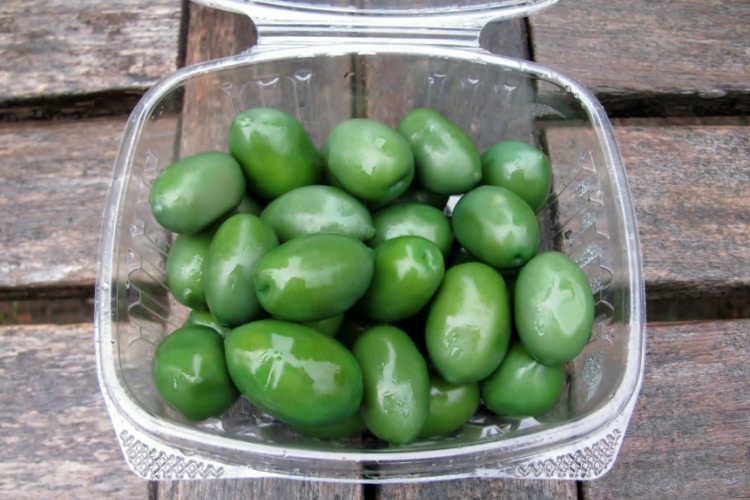
What Are Cerignola Olives?
Cerignolas are a delicacy of southern Italian cuisine, named after the Apulian city of Cerignola. They’re the world’s biggest olives, being roughly the size of a large shelled pecan.
Cerignola olives come in green, crimson (due to food coloring), and black varieties. Green is the firmest, while black is the softest.
Cerignola olives are meaty, mellow, and fruity.They are ideal to serve at cocktail gatherings or as a lovely antipasto garnish. They are commonly served with salami and grilled cheese.
Cerignola olives are often sold pitted, which keeps their hard texture in brine. You may still serve them without the pits — simply remove the woody core with a cherry pitter. This will make a nice hole for you to fill with cheese, cured meat, tomatoes, peppers, or carrots.
Substitutes for Cerignola Olives
Manzanilla Olives
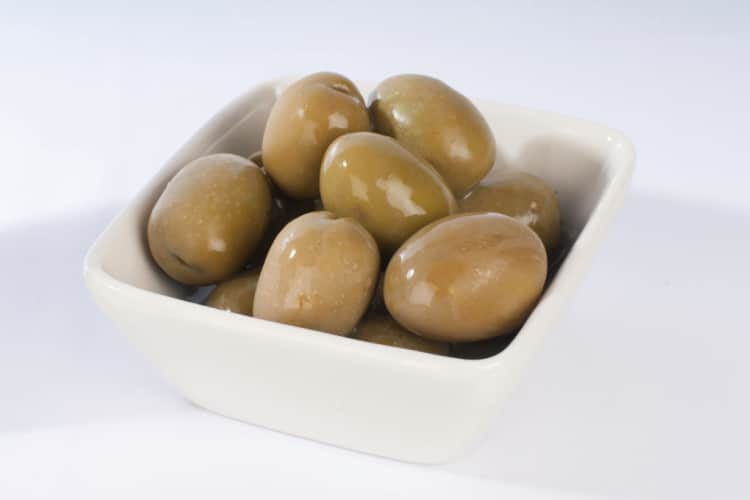
Manzanilla olives, which are exclusive to Seville, Andalusia, and are well-known for their delicate flavor, are a preferred addition to martinis.
Manzanilla translates to “small apple” in Spanish, and when you look at them, their spherical shape really resembles a small apple.
Their main characteristic is the high oil content of around 20%, so they’re packed with all the health benefits of premium olive oil. Moreover, they’re incredibly buttery on the palate.
Manzanilla olives’ small pits are super simple to remove. Because of that, they are often filled with pimento or garlic, making them even tastier.
Their mild saltiness and rich filling make these olives a good addition to spicy sausage and a hearty glass of cava wine.
Castelvetrano Olives
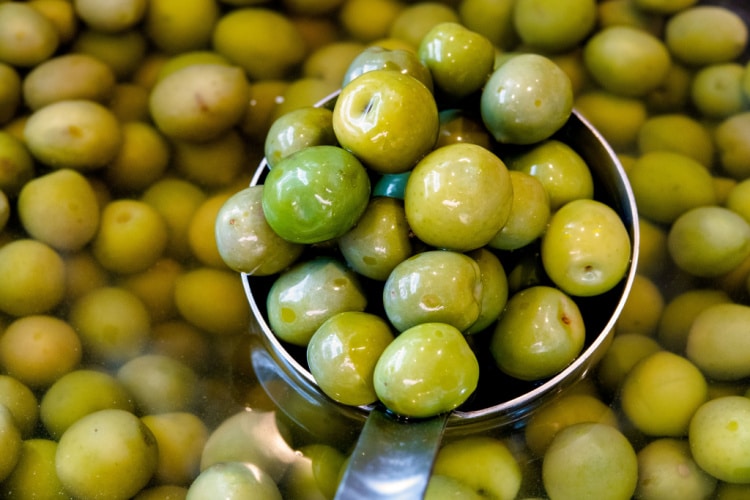
Castelvetrano olives from Italy are easily recognizable by their extraordinarily brilliant, natural green hue.
They’re supple and juicy, with a gently sweet flavor that appeals to a wide range of palates. Castelvetrano olives go nicely with antipasto salads, sprinkled on top of pizza, and stacked on charcuterie plates.
You can also slice them up and create an olive sauce with them. They make a great side dish for chicken, lamb, or sea bass.
These olives pair well with a cool dirty martini as well.
Gordal Olives
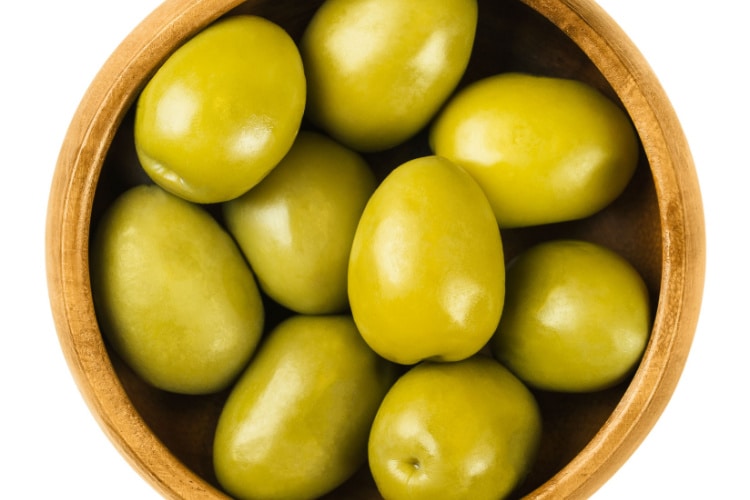
This green olive, known as the “beauty of Spain,” is one of the world’s most well-known olives.
Gordal olives have a beautiful green color, a big oval shape, and a rich texture. Since they’re prized for their big size and meaty pulp, it makes sense that their name, Gordal, means “the fat one.”
These olives are juicier than other kinds, with a citrus flavor and a little bitterness. They are delicious when filled with peppers and garlic and served with Neufchatel or cream cheese.
They also make a fantastic complement to tapas recipes, thanks to their balanced bitter and salty flavor.
Picholine Olives
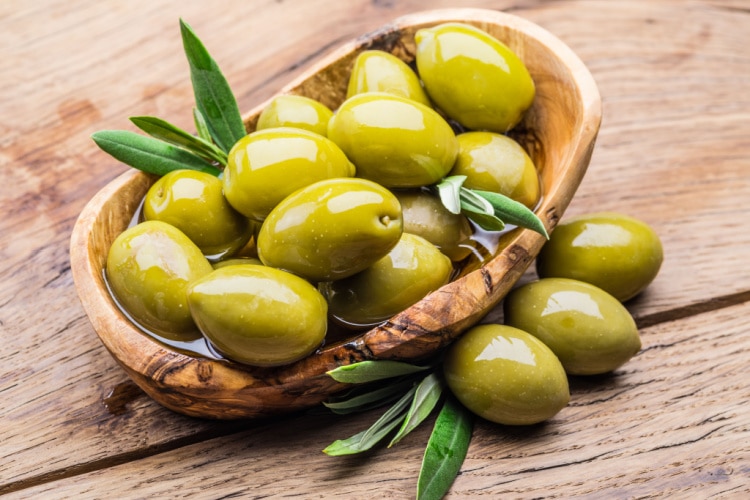
Picholine olive trees may be found in Morocco, as well as on the French and Italian Rivieras.
Picholine olives are crisp, firm olives with a light green hue, almond form, and hearty texture. Their taste is citrusy with a light salty and buttery accent.
These olives have the perfect tart-fruity balance, making them suitable for seafood dishes like fish sticks, roasted mushrooms, or artichoke salad.
If you want to include them in a tasty antipasto, they go well with prosciutto, Brie cheese, cherry tomatoes, herbs, and a glass of Sauvignon Blanc.
Barnea Olives
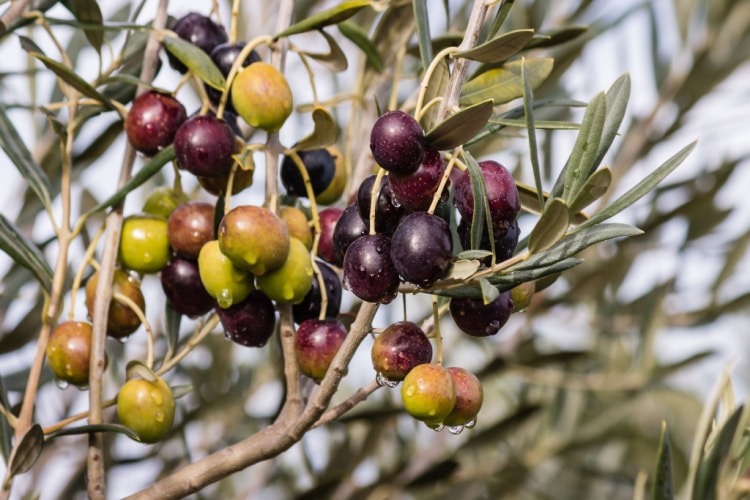
Several nations throughout the world have staked claims to various varieties of olives, and Israel has claimed the Barnea olives, where they are quite popular. However, Argentina and Australia are also countries that grow Barnea olives.
This olive variety has a buttery texture with a nutty and fruity flavor, which is also evident in Barnea olive oil. Incorporating Barnea into pizzas, pasta dishes, and cheese boards will definitely take your dish to another level.
Gaeta Olives
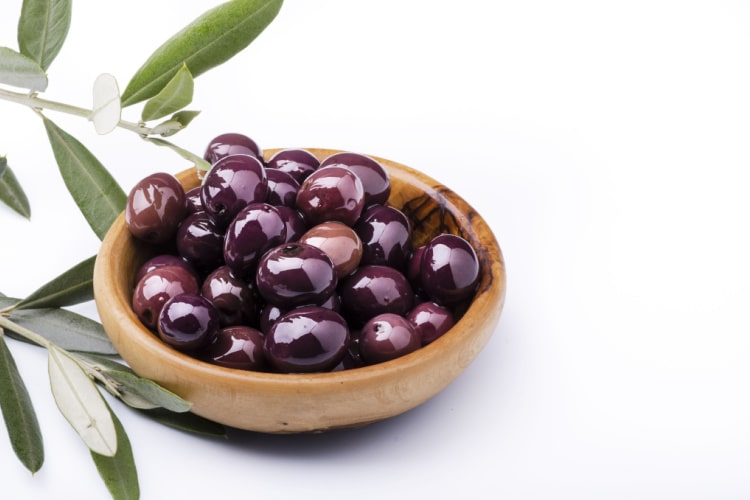
Black, oval Gaeta is a kind of Italian olive native to the Gaeta region in Italy. They have a rich texture and a flavor that’s part sour and part salty.
These olives can be dry-cured, resulting in a wrinkled texture and black color. On the other hand, brine-cured Gaeta are much smoother and reddish in hue.
You can use Gaeta olives in a variety of recipes. They may be used as a topping for pizza and make a wonderful addition to pasta dishes and salads. You can mix them with dough to create olive bread or serve them chopped up in a tuna sandwich.
A Guide to Buying Olives
When it comes to buying olives, it might be difficult to know exactly what to look for. Olives are often offered in glass jars or cans, so how would you know whether you’ve picked a high-quality alternative to cerignola olives?
To begin, ensure that the product is not expired. If the liquid is milky white or the olives have a weird pale color, try another product.
Another thing that you should look for is the ingredients of the brine. Always choose olives that are brined in natural ingredients, for example, olive oil, olive water, salt, and lemon.
Supermarket stores offer olives for anywhere from $2 to over $10 per jar. Most people will naturally choose the less expensive jar. However, the more expensive ones may be a better choice for genuine olive enthusiasts.
While many types of olives are available in supermarkets, if you want a fresher product, go for olives from the farmer’s market.
Your options will also differ significantly based on your location. If you reside in a small town, you may be restricted to what your local grocery shop offers. Bigger cities provide you with more options.
Thankfully, you can always shop online. A virtually infinite number of food retailers provide internet purchasing. Thrive Market and Gourmet Foodstore both have excellent olive varieties and offer online shopping.
Conclusion
So, there you have it, olive enthusiasts — the best cerignola olives substitutes that you should definitely add to your grocery list.
Which one caught your eye (or palate) the most? Is it the manzanilla olives shaped like small apples or the big, oval-shaped gordal olives? Perhaps you like something darker, in which case you should opt for the gaeta variety.
Either way, remember to check the expiration date and the brine ingredients of your pick. The more costly alternatives are often worth it because they’re much more packed with flavor than the less expensive options. If you don’t have a lot of local options, consider ordering olives online.






